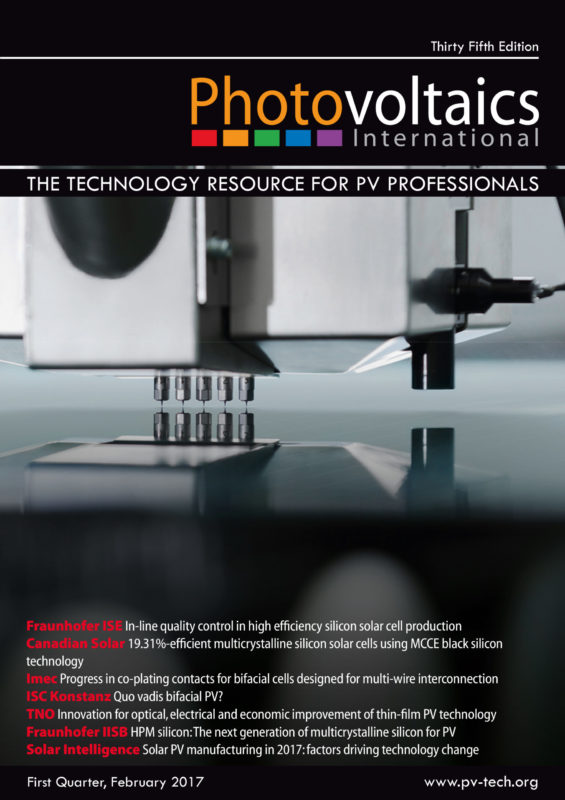By Xusheng Wang, Shuai Zou & Guoqiang Xing, Canadian Solar Inc. (CSI)
A novel nanoscale pseudo-pit texture has been formed on the surface of a multicrystalline silicon (mc-Si) wafer by using a metal-catalysed chemical etching (MCCE) technique and an additional chemical treatment.
A desirable nanoscale inverted-pyramid texture was created by optimizing the recipe of the MCCE solution and using a proprietary in-house chemical post-treatment; the depth and width of the inverted pyramid was adjustable within a 100–900nm range. MCCE black mc-Si solar cells with an average efficiency of 18.90% have been fabricated on CSI’s industrial production line, equating to an efficiency gain of ~0.4%abs. at the cell level. A maximum cell efficiency of 19.31% was achieved.


